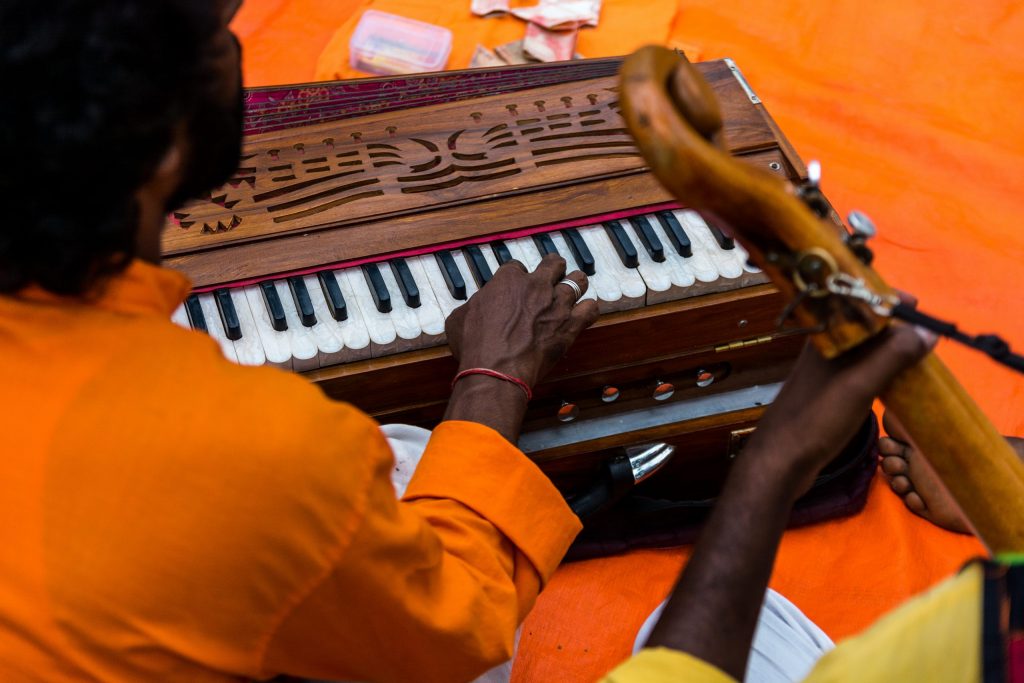
By: Ammar Mooraj
I grew up surrounded by mostly white people. My friends, classes, and teachers were overwhelmingly white, and I don’t mean purely in skin tone. I mean culturally. I was raised with a real underlying sense that Euro-derivative cultures were the only source of true art. A lot of the people I saw who looked like me—brown, I mean—were uneducated low-income workers that were treated terribly by the world around them. From a very young age, I implicitly understood the culture of Pakistan, where my family originates from, as being below Western culture.
By the time I was five or six, I was actively rejecting both Pakistani cuisine and learning my mother tongue. I thought of South Asian art and entertainment as ridiculous and not worth my time. However, that’s just how South Asian art was seen by the culture around me. The accents were seen as a sign of unintelligence, the melodrama in Bollywood films was seen as asinine, and the culture as a whole was seen as a joke. Take, for instance, Apu in the Simpsons or Baljeet in Phineas and Ferb. Funny, but not something anyone should embrace. Perhaps most damagingly, I actively rejected the music of Pakistan. Despite music being one of the unwavering interests in my life and something that I have always been open to exploring, I simply shut out the music of Pakistan and India as ridiculous and not worth my time.
Over the past few years, I have been actively trying to undo the self-loathing that I was socialized into possessing. More recently, I’ve begun to explore music from Pakistan. So, with the hope that externalizing my process of healing might help or educate others, let’s talk about Qawwali.
Qawwali, pronounced as “Qav-ali,” with a light ‘v’ sound instead of a ‘w,’ is a traditional form of Sufi music. Its origin is somewhat contested, but we know for sure that around the 11th century it existed in Persia, migrating throughout Turkey, Uzbekistan, the Indian subcontinent, and surrounding areas. The word comes from the Arabic word ‘Qawl,’ which roughly translates to “utterance of the prophet.” A ‘Qawal’ is thus someone who sings these words and ‘Qawwali’ are the words a ‘Qawal’ sings. Given its connection to the words of the prophet, you’d imagine it might resemble a Muslim Indian version of hymns. However, unlike hymns, which tend to be very rigid and focused on God in the Christian sense, as a result of its Sufi origin, Qawwali tends to be extremely free and connected to a personal relationship with God and spirituality. Culturally, it’s comparable to a middle ground between Gospel and folk.
An Indian subcontinent hand drum known as the tabla tends to form the rhythmic base, along with clapping from the audience. Qawwali is meant to be a communal experience blurring the lines between performer and audience. Harmoniums often form the harmonic base, and one or two lead voices tend to form the melodic base. This, combined with elements of improvisation, call and response, and syncopation and polyrhythm, make it sound like a mixture of classic American folk, traditional African drumming, and jazz. Although, I have heard it compared to flamenco as well.
When I first tried listening to Qawwali, I found myself unable to connect with or enjoy it. I’m the kind of person who needs to be able to feel and understand my music, which I simply couldn’t do. Traditional South Asian music’s conception of time isn’t measured in beats and bars like Western music’s is. Rather, Qawwali’s pulse is based on specific rhythms that are commonly known and used as its backbone. These are referred to as taals. A taal is a cycle of beats where each beat is made up of a different syllable. For example, one of the most popular taals is the teentaal, which would be counted as: DHA DHIN DHIN DHA DHA DHIN DHIN DHA DHA TIN TIN TA DHIN DHIN DHA. Each syllable refers to a different type of stroke on the tabla that lays the rhythmic foundation for the music. As a result, different syllables reflect different levels of emphasis on each note. This means that the feeling of ‘strong’ or ‘weak’ beats is built into the rhythmic feel of the music in a much more complex and nuanced manner than in traditional Western musical styles. Without getting too much into music theory, I realized that I simply wasn’t socialised to be able to feel the way the music functioned in the same way that I could with Western music. So, I had to slowly introduce and acclimate myself to the music, which I think might be true for anyone trying to approach this art from a Western perspective. I began by listening to Bollywood songs from famous Qawwali artists like Nusrat Fateh Ali Khan. However, these tracks have been engineered to have wide appeal and thus possess a Western influence. As I began to get used to the sounds and feel, I slowly moved towards the more traditional works of Nusrat Fateh Ali Khan. Once I transitioned to more traditional Qawaali, I left behind the electric guitars, basses, drum kits, and 4/4 feel that tethered me to my Western comfort zone and understanding in favour of twenty-minute mediative tracks of improvisation and true Qawwali.
I still have a lot of Qawwali, and music in general, to explore. However, while my journey has only just begun, I hope I’ve convinced you to consider joining me in the exploration of music as not just entertainment or art, but as a method of connecting with the greatly varied heritages, traditions, and cultures of humans at large. With the pressure of life around us, it’s easy to accept contentment with music that’s easily accessible. But sometimes, exploring new, challenging music can be exactly what you need to help you grow as a person, or, in my case at least, to heal wounds you didn’t want to admit were there.